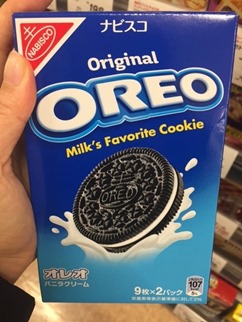| Alternative names | Soda cracker |
|---|---|
| Type | Cracker |
| Place of origin | United States |
| Main ingredients | Flour, yeast, and baking soda |
- Do Graham Crackers Expire
- Do Keebler Crackers Expire
- Do Crackers Expire Eggs
- Do Saltine Crackers Expire
- Do Lance Crackers Expire
Nabisco Ritz or Ritz Bitz Crackers 9.5-15.1 1/3 Nabisco, cookie or cracker products, 6.5 0.75/2 Nabisco, cookie or cracker products, 6.5 Nabisco Wheat Thins, Triscuit or Chicken in a Biskit Crackers family Size 12-16 oz., 1/3 Nabisco, cookie or cracker products, 6.5 0.75/2 Nabisco, cookie or cracker products, 6.5. If they taste good they'e fine. Expiration dates are often skewed to get the paranoid to toss stuff. If they're stale, you could feed them to the squirrels or save them for next fall, along with the drippings from any fatty foods you cook along the way. Add the crackers, some birdfood, the fat, and a bit of peanut butter to make those things you hang on trees for birds to nibble on.
A saltine or soda cracker is a thin, usually square cracker made from white flour, yeast, and baking soda, with most varieties lightly sprinkled with coarse salt. It has perforations over its surface, as well as a distinctively dry and crisp texture.
Some familiar brand names of saltine crackers in North America are Christie's Premium Plus (Canada), Nabisco's Premium (U.S.), Sunshine Biscuits' Krispy (U.S.), Keebler's Zesta (U.S.) (both owned by Kellogg's), Molinos Modernos' Hatuey (Dominican Republic) and Noel's Saltín (Colombia). Unsalted tops as well as whole grain saltines can also be found.
Soda crackers were described in 'The Young Housekeeper' by Alcott in 1838.[1]
In 1876, F. L. Sommer & Company of St. Joseph, Missouri started using baking soda to leaven its wafer thin cracker. Initially called the Premium Soda Cracker and later 'Saltines' because of the baking salt component, the invention quickly became popular and Sommer's business quadrupled within four years. That company merged with other companies to form American Biscuit Company in 1890 and then after further mergers became part of Nabisco in 1898.[2][3][4]

In the early 20th century, various companies in the United States began selling soda crackers in Puerto Rico and referred to them as 'Export Soda'. Rovira Biscuit Corp. of Puerto Rico also started selling their soda crackers with the same name. The term 'Export Soda' became a generic term in Puerto Rico for these crackers. In 1975 Keebler Co. was refused a trademark for the term because it was 'merely descriptive'.[5]
In the United States, Nabisco lost trademark protection after the term 'saltine' began to be used generically to refer to similar crackers (see generic trademark for how this occurs). The name 'saltine' had been placed in the Merriam Webster Dictionary in 1907 with a definition of 'a thin crisp cracker usually sprinkled with salt”.[6] In Australia, Arnott's Biscuits Holdings still holds a trademark on the name 'Saltine'.[7][8]
They were made in the United Kingdom by Huntley and Palmers, and also in Australia and New Zealand under the brand name Arnott's Salada.
Uses[edit]
Saltines are commonly eaten as a light snack, often with cheese, butter, peanut butter or other spreads. They may also be dipped or crumbled in soups, chilis, stews, and eaten with, or crumbled into, salads. Typically they are sold in boxes containing two to four stacks of crackers, each wrapped in a sleeve of waxed paper or plastic. In restaurants, they are found in small wrapped plastic packets of two crackers, which generally accompany soup or salad. Cracker meal, a type of coarse to semi-fine flour made of crushed saltine crackers, may be used as toppings for various dishes; breading for fried or baked poultry, fish or red meats; or as a thickener for meatloaf, soups, stews, sauces, and chilis.
As a home remedy, saltines are consumed by many people in order to ease nausea and to settle an upset stomach. Saltine crackers have also been frequently included in military field rations (Meal, Ready-to-Eat, or MRE) in the United States.
Baking process[edit]
Saltines have been compared to hardtack, a simple unleavened cracker or biscuit made from flour, water, and sometimes salt. However, unlike hardtack, saltines include yeast as one of their ingredients. Soda crackers are a leavened bread that is allowed to rise for twenty to thirty hours. After the rise, alkaline soda is added to neutralize the excessive acidity produced by the action of the yeast. The dough is allowed to rest for three to four more hours, to relax the gluten, before being rolled in layers and then baked.
Do Graham Crackers Expire
Flat saltine crackers have perforations on their surfaces. During baking, the outer layer of the dough hardens first, restricting out-gassing of evolved gasses. The perforations connect the top surface to the bottom surface to prevent the cracker from pillowing as a result of these evolved gasses.
See also[edit]
References[edit]
Do Keebler Crackers Expire

- ^Alcott, William Andrus (1838). The Young House-keeper: Or, Thoughts on Food and Cookery. G. W. Light.
soda crackers.
- ^'Soggy Cracker House Needs Some Help'. St. Joseph News-Press. 15 April 2008. Retrieved October 12, 2013.
- ^'Biographical Sketch of F. L. Sommer, St. Joseph, Buchanan County, MO'. USGenWeb Archives. Retrieved 2013-03-27.
- ^'Michigan State University Libraries - Special Collections - Little Cookbooks: The Alan and Shirley Brocker Sliker Culinary Ephemera Collection'. Lib.msu.edu. Retrieved 2012-09-26.
- ^'KEEBLER CO. v. ROVIRA BISCUIT CORP'.
- ^'Nabisco Premium Saltines The Snack That Takes You Back'(PDF). SaigeFalyn. Retrieved 2013-03-27.
- ^'Trade Mark Details - Full - Trade Mark : 214303'. ipaustralia.gov.au. Retrieved 2013-10-29.
- ^'Trade Mark Details - Full - Trade Mark : 98208'. ipaustralia.gov.au. Retrieved 2013-10-29.
| Wikimedia Commons has media related to Saltine crackers. |
Do Crackers Expire Eggs


Do Saltine Crackers Expire

Do Lance Crackers Expire
